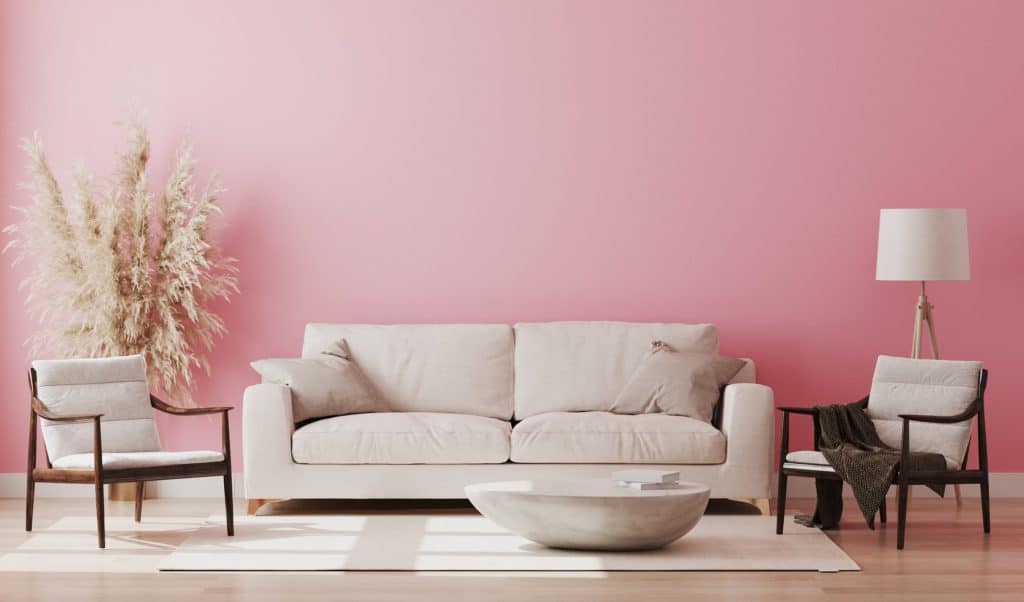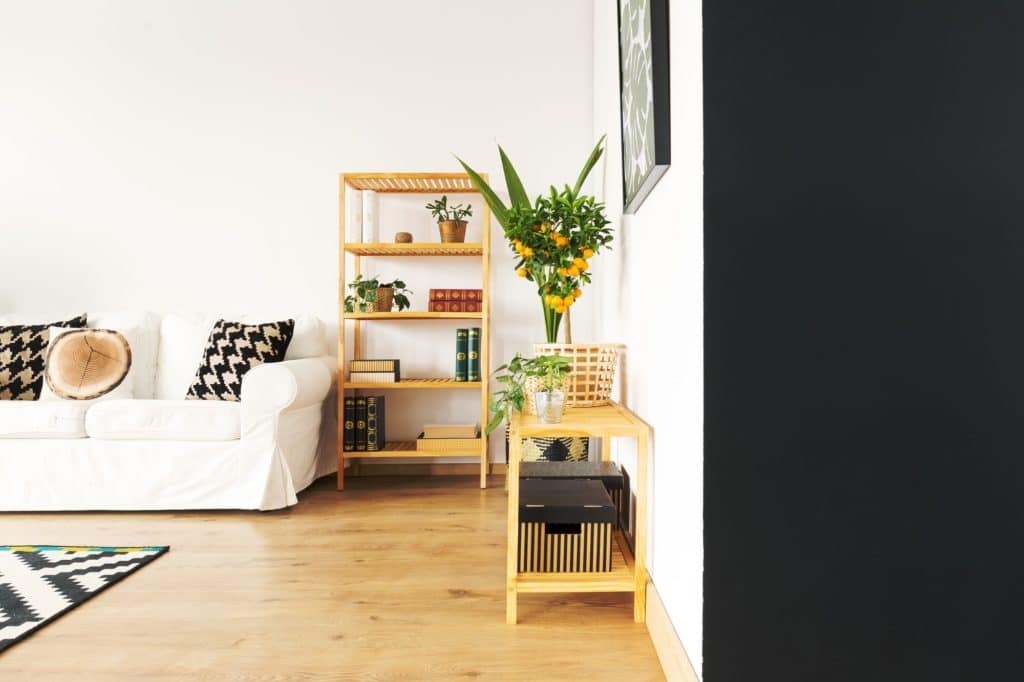I could not have made a better choice with our living room wall colors.
I love anything and everything brown, and put that together with our focus on combining warmth and comfort with resale value and painting our living room walls in Sherwin Williams Latte was a no brainer.
Not everybody loves earth tones, though. The fact of the matter is, there are so many excellent living room wall colors available that there is no need to settle for something conservative. Stylish means many things to many people, and our goal is to show you how possibilities are out there.
1. What’s Your Design?
Design styles can dictate your living room wall colors to a degree. Most folks automatically think blues, greens and yellows when a nautical design style is mentioned.
Modern conjures up thoughts of black and white, while mission style brings reds and browns to mind.
There is some conventional wisdom to this. But remember, it’s our living room! So if you like the result and your guests rave, is it that important that you followed the rules of interior decorating to a tee?
Here are some design styles and the living room wall colors that tend to represent the most often to give you a baseline. But, again, it’s up to you to make your living room work for you. Using colors you like is most important.
- Casual – Earth tones (shades of brown, orange, gold, softer reds, olive and other muted greens)
- Contemporary / Modern – Black, white, grey/silver, and bright solid colors (red, blue, green)
- Country – light blue, shades of yellow, warm reds, orange, green
- Rustic / Lodge – hunter green, darker shades of red, brown, yellow, orange
- Traditional / Victorian – muted and lighter colors like light green, light blue, restrained gold, softer reds
- Nautical – light to royal blue, green, yellow, tan, off-white
As you can see, these rooms don’t necessarily fit the norm, but they certainly all make a unique statement. So, armed with the basics, here are some other things you may want to consider when deciding on living room wall colors.
2. Big or Small?
Not only does this mean, “Do you have a big or small room?” This also means, “Are you trying to make the room look bigger or smaller?”
Your living room wall colors can make your room appear bigger or smaller, so deciding if this type of “visual trick” can be helpful to you is very important before you get started.
If you’re looking to make the room feel smaller or “cozier”, use warmer or darker colors to accomplish this. For example, browns, dark reds, and bold blues bring the walls closer. Use this when trying to control a large living room or if furnishings are a bit sparse.
In contrast, if your goal is to make your small space look bigger, lighter or cooler colors are the way to go. Lighter blues, yellows, tans, pinks, or greens will move the walls further away.
This is an excellent idea for a small living room or a living room where you’re trying to emphasize the furnishings by making the wall color blend into its surroundings.

3. In or Out?
What exactly do you do in your living room? This isn’t as obvious a question as it might sound. In many living rooms, various stimulating activities occur, like watching movies or sporting events, playing games, talking, or entertaining. These are social, outward activities.
However, in some living rooms, a lot of relaxation is taking place. Sometimes, the living room is primarily for sitting, reading, working, or just showing off. This level of activity is calmer and focused inward.
Inactive, social living rooms, warm colors tend to work best because they support the level of activity. Yellows, browns, reds, and oranges are warm colors.
In more inwardly focused living rooms, cool colors are the way to go. Blues, greys, whites, and mint green would be good examples. These colors tend to calm us and validate the more serene activities in these living rooms.
4. Accent Walls
There are many valid reasons why you should paint one of your living room walls a different color than the rest. For example, if there are issues with the amount of natural light entering a room, you may choose to paint a wall a bit lighter in the area where the light is worst.
What if your room is a perfect square or lacks features? That could get a little boring. So instead, liven it up by painting one wall in an accent color, either vivid or just a few shades lighter, depending on your own personal style.
Have an interesting architectural element or a particular piece of furniture that you want to set off? That’s another great reason to paint an accent wall.
Here’s another one for you. Maybe you want an accent wall! That’s fine too because it’s your room! Your living room wall colors are your unique statement about the room.

More Useful Ideas
These ideas for your living room wall colors may sound a little random, but they’re essential.
- Take into consideration how much natural light comes into your living room. If lots of light comes in, you can “cool” your colors quite easily. Just the opposite, if there is little natural light, the emphasis should be on “warming” the room up.
- Look to the past for your future. Study the colors associated with different periods to help you choose the right living room wall colors for your design style. Example: If you’re going mission-style, study the colors most associated with the Arts & Crafts period.
- Find photos of living rooms and think about what you like and don’t like. Magazines like In Style, House Beautiful, Martha Stewart Living and “O” At Home are great photos sources. Also, check out stock photo sites, like iStockPhoto.com.
- Don’t go against the already distinctive features of a room, especially if these features are permanent or semi-permanent, like moulding or cabinetry.
- Do not be afraid to customize. Don’t limit yourself to the color swatches you see at every paint store or home improvement warehouse. Often, you’ll find the need to make a color a couple shades darker or lighter or even glossier to work with different architectural features or to handle the natural lighting of a room.
Color Crazy!
Now it’s time to have some fun. You’re armed with great information on choosing living room wall colors, so do it!
Remember to use a few simple rules and a lot of individuality, and if you don’t like how it looks, you can always cover it up and start over again. That’s the great thing about paint, it’s relatively inexpensive, and everybody can do it.



































